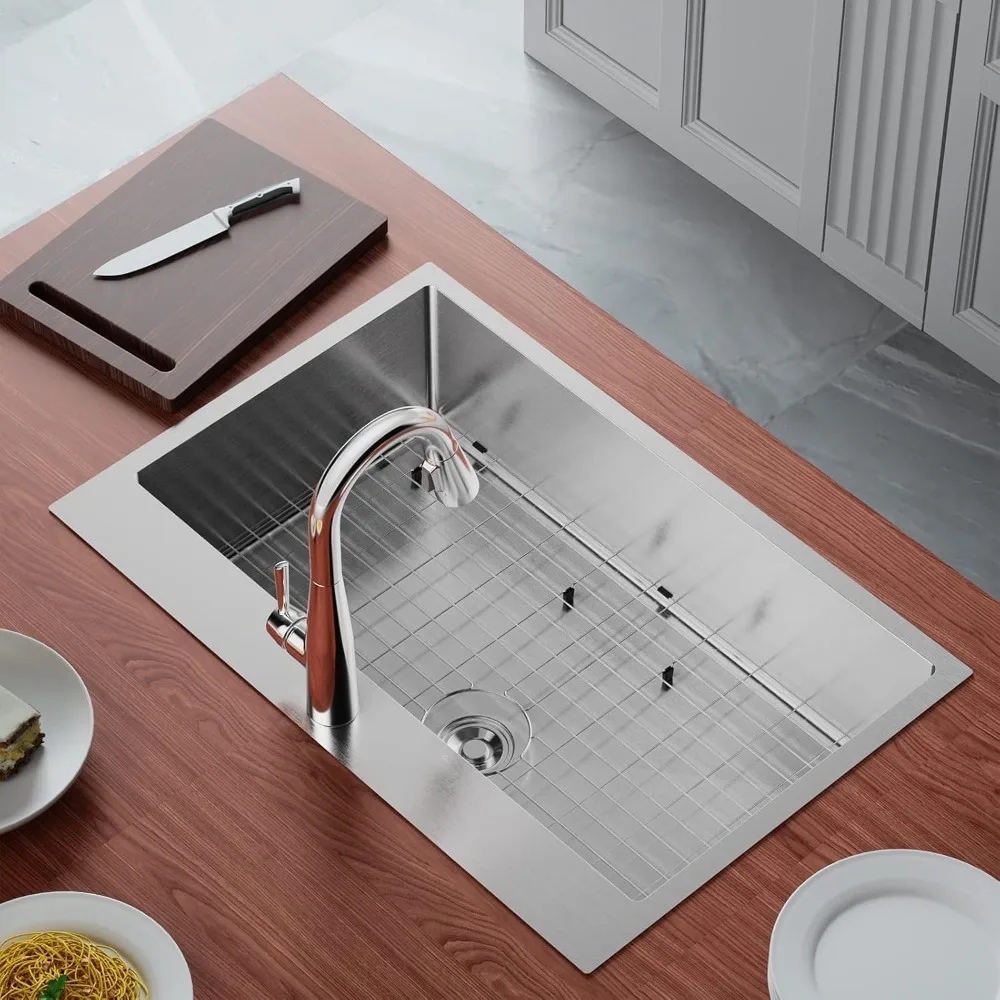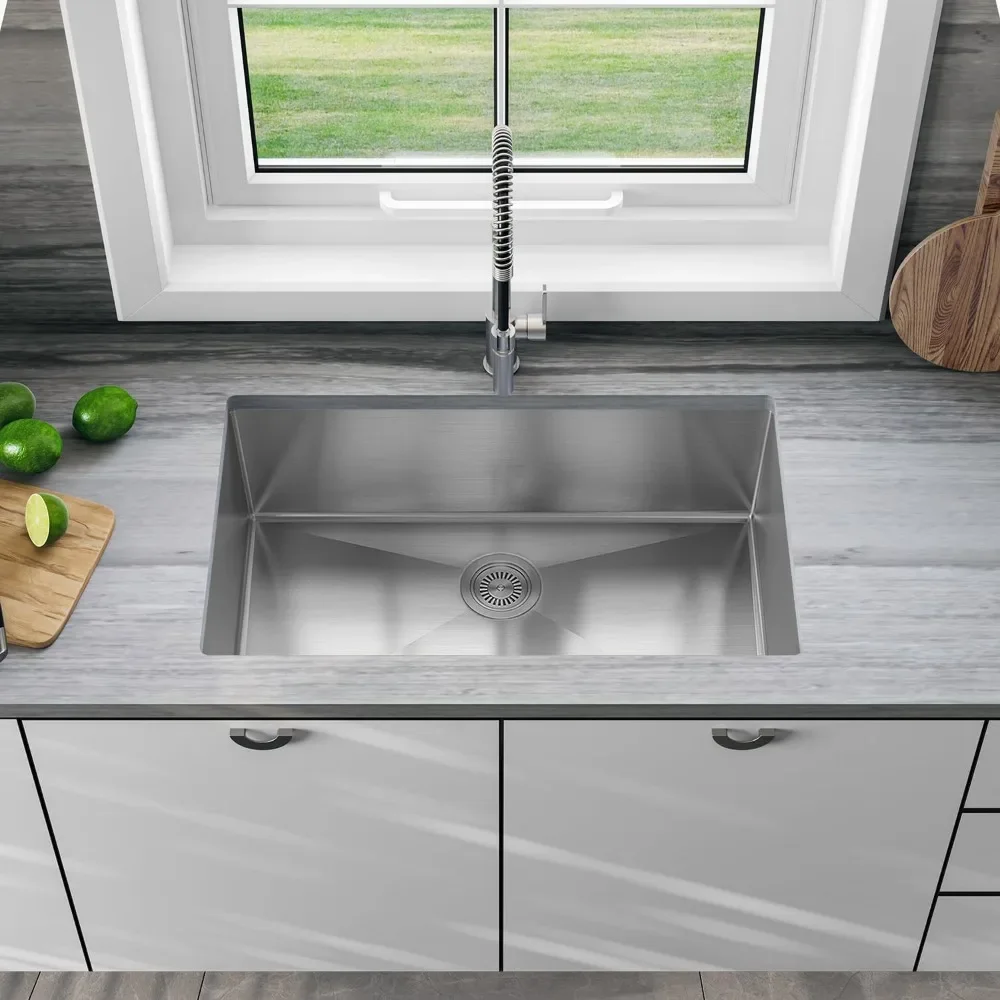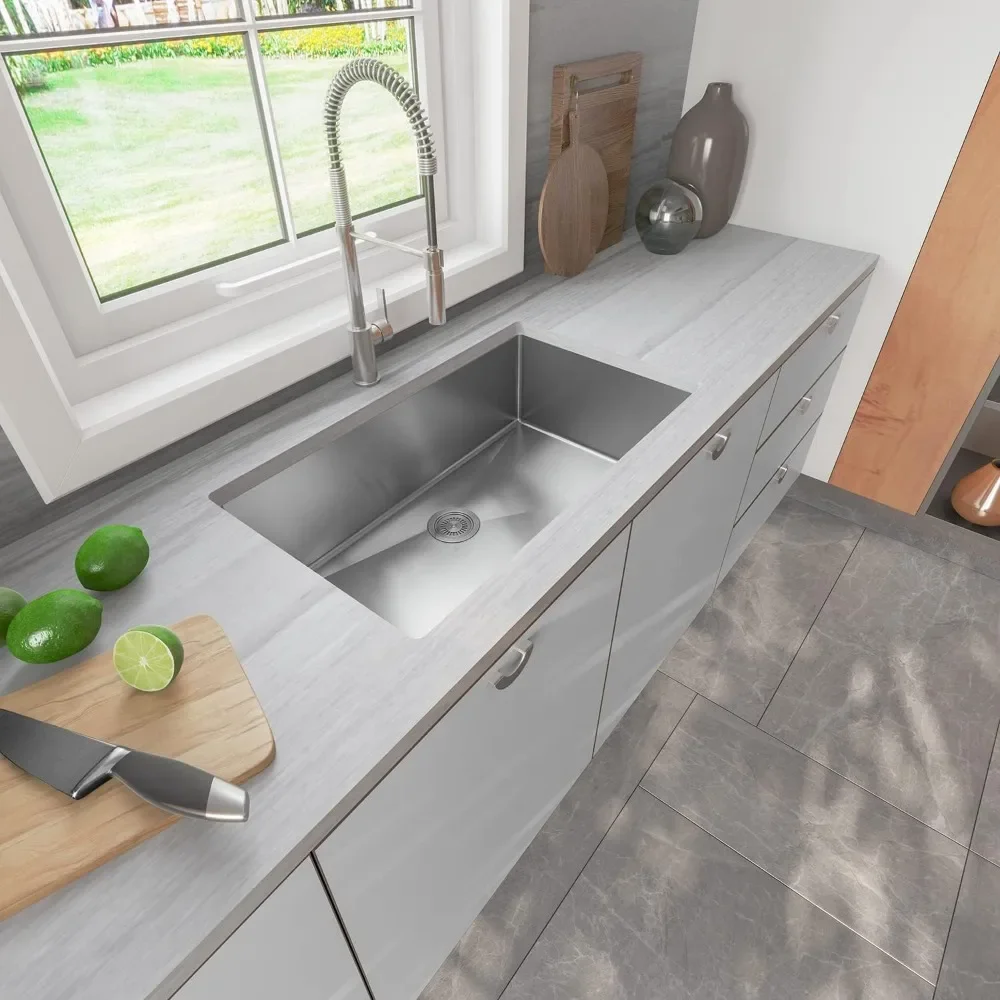Clogged kitchen sinks are one of the most common household issues, causing inconvenience and frustration for homeowners. Understanding how to unclog kitchen sinks effectively can save you time and money, allowing you to maintain a functional kitchen without needing to call a plumber. In this comprehensive guide, we’ll explore various methods and solutions to help you tackle those stubborn clogs.
Understanding Common Causes of Kitchen Sink Clogs
Accumulation of Food Debris
One of the primary reasons for clogged kitchen sinks is the accumulation of food debris. Over time, scraps from meal preparation, grease, and oils can build up in the pipes, creating blockages that restrict water flow. When washing dishes, it’s common for small bits of food to slip down the drain, especially if you don’t use a sink strainer. These tiny particles can combine with grease and other substances, leading to significant clogs.
Grease Buildup
Another significant contributor to kitchen sink clogs is grease buildup. Cooking oils, butter, and fats often find their way into the sink during cleaning or cooking processes. Unlike water, grease solidifies when it cools, which can lead to serious blockages over time. Even small amounts of grease can create a sticky residue inside the pipes, trapping food particles and forming a substantial clog. Understanding these causes can help you take preventive measures, making it easier to keep your kitchen sink flowing smoothly.

Tools You’ll Need for Unclogging
Essential Tools for DIY Solutions
Before diving into unclogging your kitchen sink, it’s essential to gather the right tools. Having the proper equipment on hand can make the process much more manageable. Here’s a list of essential tools you might need:
- Plunger: A standard cup plunger is ideal for dislodging minor clogs.
- Drain Snake: This tool can reach deeper into the plumbing system to break up stubborn clogs.
- Baking Soda and Vinegar: This natural combination can effectively dissolve minor clogs and odors.
- Bucket: A bucket will help catch any excess water and debris when working under the sink.
- Rubber Gloves: Protect your hands while handling potentially dirty materials.
Optional Tools for Advanced Clogs
For more severe clogs, you may want to consider additional tools. A wet/dry vacuum can be particularly useful for sucking out debris from the sink or drain. If you have access to a plumbing auger, this tool can be beneficial for clearing tough clogs deeper in the plumbing system. Having these tools ready will prepare you for a variety of clog situations, ensuring you can address any issue that arises.
Using a Plunger Effectively
The Right Technique for Success
Using a plunger is one of the simplest and most effective ways to unclog a kitchen sink. To start, ensure there’s enough water in the sink to cover the bottom of the plunger cup. Place the plunger over the drain and ensure a good seal by pressing down firmly. With quick, forceful motions, push down and pull up on the plunger for about 15-20 seconds. The suction created by this action can dislodge minor clogs, allowing water to flow freely again.
When to Use a Plunger
A plunger works best for minor clogs caused by food debris or small blockages near the drain. If the sink has standing water that doesn’t drain at all, a plunger may be your first line of defense. However, if repeated plunging doesn’t yield results, it may be time to try a different method. Understanding when to use a plunger can save you time and effort, making it an essential skill for every homeowner.
Baking Soda and Vinegar Method
Natural Solutions for Clogs
Baking soda and vinegar are two common household items that can work wonders for unclogging kitchen sinks. This natural solution is not only effective but also environmentally friendly. Start by pouring about half a cup of baking soda down the drain, followed by an equal amount of vinegar. You’ll notice fizzing as the two ingredients react. This reaction helps to break down food particles and grease, making it easier to flush away the clog.
Following Up with Hot Water
After allowing the baking soda and vinegar mixture to sit for about 30 minutes, it’s crucial to flush the drain with hot water. Boil a kettle of water and carefully pour it down the drain to help wash away any remaining debris. This method is excellent for minor clogs and can also help eliminate unpleasant odors from the drain. Regularly using this method can keep your drains clear of buildup, making maintenance easier over time.
Using a Drain Snake
What is a Drain Snake?
A drain snake, or auger, is a flexible tool designed to reach deep into the plumbing system to remove stubborn clogs. It typically consists of a long, coiled wire that can navigate through pipes to break apart tough blockages. If you find that common home remedies aren’t effective, a drain snake can be an invaluable tool in your plumbing arsenal.
How to Use a Drain Snake
To use a drain snake, remove any visible debris from the sink drain. Insert the snake into the drain and rotate the handle clockwise as you push it deeper into the pipe. As you encounter resistance, continue turning the handle to break up the clog. Once you feel the obstruction give way, slowly pull the snake back out, bringing any debris with it. Finally, run hot water through the drain to ensure it flows freely. This method can be very effective for clogs that are further down in the plumbing system.

When to Use Chemical Drain Cleaners
Understanding Chemical Drain Cleaners
Chemical drain cleaners are a last resort for many homeowners facing severe clogs. These products contain strong chemicals designed to dissolve organic material, such as hair, grease, and food particles. While they can be effective, it’s important to use them with caution, as they can be hazardous if mishandled and may damage plumbing over time.
Safety Precautions
If you choose to use a chemical drain cleaner, always follow the manufacturer’s instructions carefully. Wear rubber gloves and safety goggles to protect yourself from splashes. Ensure the area is well-ventilated, as fumes can be harmful. If the clog persists after using a drain cleaner, avoid repeated applications, as this could lead to pipe damage. Instead, consider trying mechanical methods like a drain snake or consulting a professional plumber.
Preventive Measures to Avoid Future Clogs
Regular Maintenance Practices
Preventing clogged kitchen sinks is easier than dealing with them after they occur. One of the best practices is to perform regular maintenance on your plumbing. Regularly pour boiling water down the drain to help dissolve grease buildup and flush away small debris. Additionally, using a mixture of baking soda and vinegar monthly can help keep your pipes clean and odor-free.
Proper Disposal Habits
Being mindful of what goes down your kitchen sink can significantly reduce the risk of clogs. Avoid rinsing grease, oils, or large food scraps down the drain. Instead, dispose of these materials in the trash or compost pile. Installing a sink strainer can also catch food particles before they enter the drain, making it easier to prevent clogs from forming.
Knowing When to Call a Professional
Signs That You Need Expert Help
While many kitchen sink clogs can be resolved with DIY methods, some situations warrant a call to a professional plumber. If you’ve tried multiple methods without success, it may indicate a more severe issue within your plumbing system. Additionally, persistent foul odors, gurgling sounds, or water backing up in multiple drains can be signs of a larger problem.
The Benefits of Professional Assistance
Calling a professional plumber can save you time and prevent further damage to your plumbing system. Experienced plumbers have the tools and expertise to diagnose and resolve complex clogs quickly. They can also identify underlying issues, such as tree root intrusion or pipe deterioration, that may be contributing to your plumbing problems. Investing in professional help can ultimately save you money and headaches in the long run.

Conclusion: Keeping Your Kitchen Sink Flowing Smoothly
Clogged kitchen sinks are an inconvenience, but with the right knowledge and tools, homeowners can effectively manage and prevent these issues. From using simple methods like plungers and natural solutions to more advanced techniques like drain snakes, understanding how to unclog kitchen sinks empowers you to maintain a functional and efficient kitchen.
By implementing regular maintenance practices and being mindful of what you dispose of in your sink, you can significantly reduce the risk of future clogs. Remember, if you find yourself overwhelmed or unable to resolve a clog, don’t hesitate to call a professional plumber for assistance. Keeping your kitchen sink flowing smoothly is essential for a harmonious home, and taking proactive steps can ensure you enjoy a stress-free cooking and cleaning experience.
